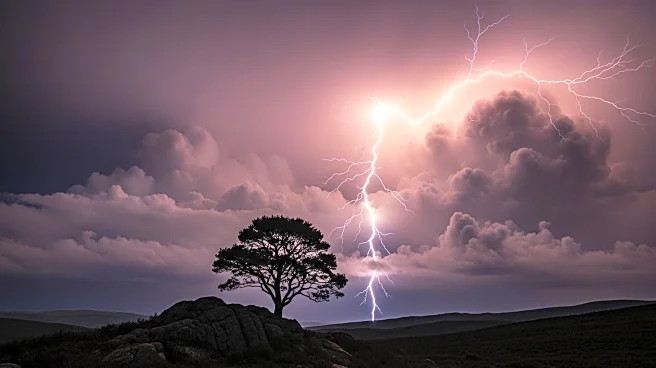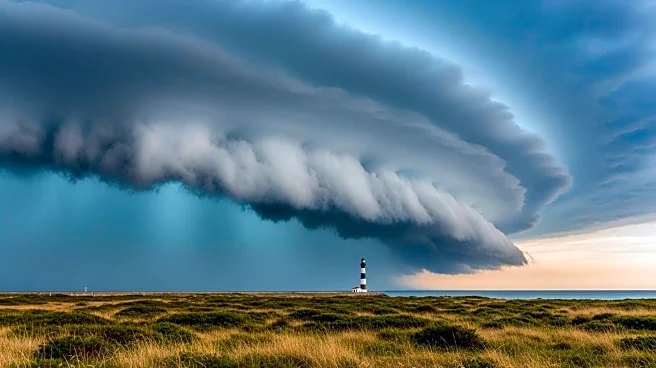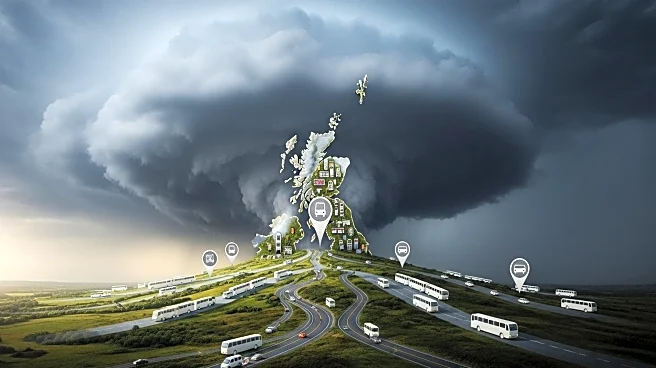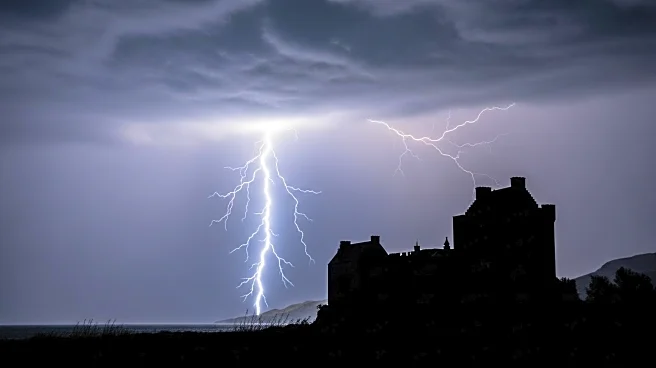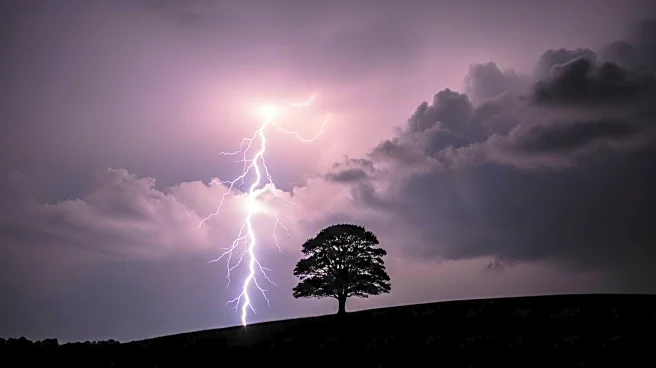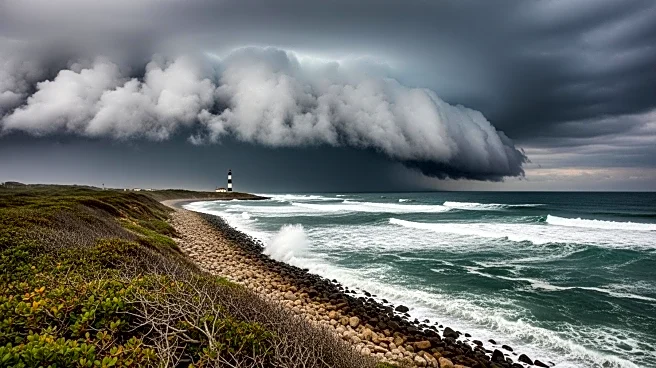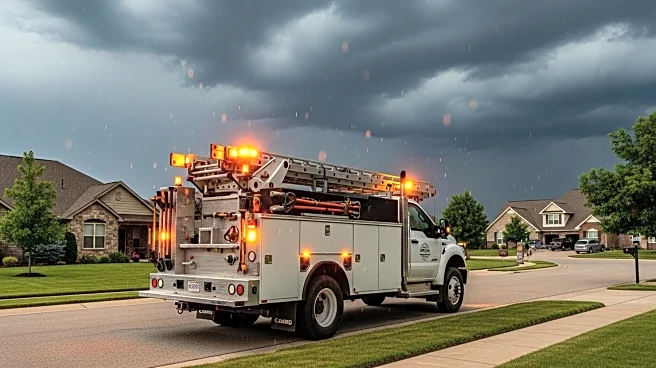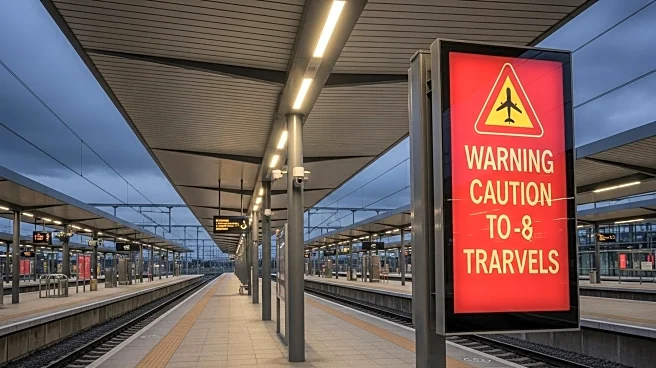What is the story about?
What's Happening?
Storm Amy has caused extensive damage across Scotland, with 42,000 homes still without power. Despite warnings, the storm hit harder and more quickly than expected, leading to fallen trees, flooding, and debris blocking railway lines. Network Rail Scotland reported over 170 incidents, with several lines closed. The storm's high winds, reaching up to 96 mph, have led to significant disruptions in transportation, including the suspension of ScotRail services and ferry cancellations. The storm has also caused structural damage, with a derelict building collapsing in Glasgow and a shopfront sign blown off in Inverness.
Why It's Important?
The unexpected severity of Storm Amy underscores the challenges in predicting and preparing for extreme weather events. The widespread damage and power outages highlight the need for improved infrastructure resilience and emergency response capabilities. The economic impact is considerable, with transportation networks severely disrupted and businesses affected. The storm's impact on daily life and safety raises questions about the adequacy of current weather forecasting and the preparedness of communities and infrastructure to withstand such events.
What's Next?
Efforts to restore power and clear transportation routes are ongoing, with authorities working to assess and repair damage. The Met Office's continued warnings suggest that further disruptions are possible. The situation may lead to a review of emergency preparedness and infrastructure resilience, with potential policy discussions on improving weather forecasting and response strategies. The storm's impact may also prompt broader discussions on climate change and its role in increasing the frequency and intensity of severe weather events.
AI Generated Content
Do you find this article useful?
